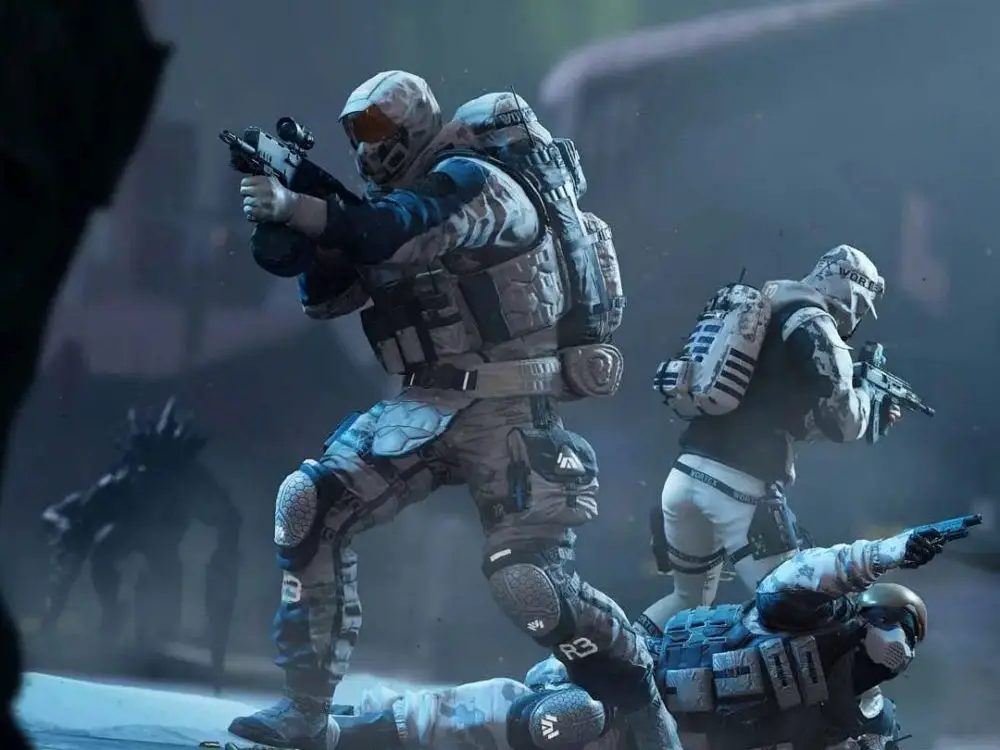Ubisoft’s Rainbow Six series is well-known for subverting the typical power fantasy in many prominent first-person shooter games. It presents players with challenging, tactical combat that encourages a slow, methodical playstyle. However, the most recent entry in the series, Rainbow Six: Extraction, drastically strays from this foundation. It adopts a sci-fi setting where players are pitted against alien enemies named “Archæans” while completing randomized, arcade-like objectives across various locales. Some long-time fans of Rainbow Six may view this change as a betrayal of the series’s tactical shooter identity. Still, Extraction brings many positive changes and additions that may lead future installments into a fresh, new direction.
Shifting Rainbow Six’s Story and Setting
The most striking element that separates Rainbow Six: Extraction from the rest of the series is its story. Prior entries largely drew from the series’s source material, the Tom Clancy novel of the same name. The series depicted the establishment of a counter-terrorist team codenamed “Rainbow” that was sent on various missions to stop potential global threats.
While previous Rainbow Six games continued the story of the book’s characters, they rarely attempted to craft complex narratives beyond the simple goal of stopping generic villains. Straightforward stories were never a problem for the previous games, as they prioritized gameplay over narrative. The science-fiction premise of Extraction, however, suggests a willingness to experiment with different story concepts for future installments.
Admittedly, Extraction itself does little to craft an engaging narrative around the Archæans, often using their unknown nature as little more than an excuse to drive players to a new locale rather than building a suspenseful plot. However, should the story expand through future updates or sequels, the Rainbow Six series will be able to give more depth to its world, similar to how 2016’s Doom engrossed many players with its extensive backstory for its world and characters.
Extraction’s setting also provides it with the opportunity to develop its world through the tools and weapons players can use. The game already presents futuristic technology, such as the rescue pods players use to save fallen teammates during missions. However, other franchises under the Tom Clancy license have further used futuristic settings to present hypothetical advancements in technology.
The Ghost Recon series explores potential future scenarios via advanced equipment, such as the finished versions of real-world prototype weapons in Ghost Recon: Advanced Warfighter and Ghost Recon: Future Soldier. The series also depicts possible military applications of artificial intelligence in its most recent entry, Ghost Recon: Breakpoint. Like Extraction, each of these titles strives to maintain a balance between realism and science fiction, but the Ghost Recon games surpass Rainbow Six by using its meticulous depictions of technology to tie both elements of its setting together.
Restructuring Rainbow Six’s Gameplay
Before releasing 2015’s Rainbow Six: Siege, the Rainbow Six games followed a linear, level-based structure like many other first-person shooter campaigns. However, Siege’s multiplayer focus meant abandoning the single-player campaign structure in favor of a progression system where players earn in-game currency to unlock items and characters. This feature incentivizes players to continue playing multiplayer matches.
Although Rainbow Six: Extraction returns the series to a stage-based format, it blends this structure with Siege’s progression system. Rather than completing a mission once and immediately progressing to the next stage, Extraction has players replaying sections to earn experience points and increase the individual levels of the various characters.
Furthermore, the game attempts to add variety by randomizing objectives on each stage and encouraging players to switch between characters with different abilities and weapons that determine their combat role. While the results aren’t perfect, as the randomized mission types can quickly become repetitive, Extraction appeals to fans of single-player and multiplayer Rainbow Six games with its rewarding gameplay and mission structure.
Rainbow Six: Extraction’s most significant change to the series is the introduction of the Archæans, which come in various forms that boast different attacks and behaviors. Moreso than the standard gun-wielding enemies of previous games, the Archæans are numerous and charge the player with little sense of self-preservation, which makes being detected by enemies a catalyst for hectic encounters where players are constantly at risk of being overwhelmed. Extraction also provides far more stealth options than previous entries, emphasizing the game’s variety of player choices in gameplay to avoid this danger.
With the numerous changes to the established formula, Extraction may serve as a template for a new era of the series. The mix of progression systems and a standard level structure creates an experience with plenty of incentive to keep playing. At the same time, the new setting, faster gameplay and broader appeal can reinvigorate the franchise for those who grew tired of the prior format or newcomers who were intimidated by the previous titles.
Reasons for Change
Rainbow Six: Extraction’s dramatic changes to the series formula echoes similar upheavals seen within other major video game franchises. A prominent example is the Resident Evil series, which began a couple of years before Rainbow Six and has undergone far more drastic alterations. While its early entries were survival-horror games with a heavy emphasis on puzzle-solving and resource management, 2005’s Resident Evil 4, in contrast, is a fast-paced third-person shooter.
Due to its critical and commercial success, most subsequent entries mimicked its action-oriented gameplay — at least until 2017’s Resident Evil 7: Biohazard, which returned the series to its survival horror roots and became the best-selling entry in the series. The Resident Evil franchise has avoided stagnation by occasionally changing the series formula while attracting newcomers and maintaining old fans. For the Rainbow Six series, Extraction may be Ubisoft’s attempt at making a similar shift toward a new direction in both gameplay and setting.
The release of Rainbow Six: Extraction could serve as an intentional move back toward the series’s origins. Despite the changes Extraction brings, it marks the first console-released Rainbow Six game focusing on PVE (player versus enemy) gameplay since 2008’s Rainbow Six: Vegas 2. In this regard, Extraction would serve as a means for Ubisoft to gauge consumer interest in a Rainbow Six game that follows the old format while also using the science fiction setting. This change-up distinguishes it from previous entries and introduces new ideas. If this is the plan for Extraction, then it may be heading for success due to its rapidly growing player-base and first-week financial success.
One final note, and perhaps the most concerning possibility, Extraction may serve to transition the campaign-focused series to the “games as a service” model that Ubisoft has implemented in other franchises. This structure is defined by continued content release through free updates and paid downloadable content, typically to maintain a game’s player base and profitability through long-term support. The flaws of this approach may not be immediately apparent, mainly as Siege has used a similar model to much success.
However, Ubisoft titles like Assassin’s Creed: Valhalla and Ghost Recon: Breakpoint demonstrate its abusive potential through microtransactions that impact gameplay. For example, players can purchase “XP Boosters” that hasten their progress. Though both games can be completed without any additional purchases (excluding the expansions), the process can be unnecessarily long and repetitive by design, driving players to in-game purchases. The new standard Extraction sets for the Rainbow Six series is just as worrying as it is promising.
While Rainbow Six: Extraction is far from flawless, it signifies an opportunity for Ubisoft to innovate the series formula and spark a new era for the franchise. As with Rainbow Six: Siege, Extraction has the potential to become a fantastic game through updates that refine and expand on its mechanics. The addition of new content demonstrates how its revamped framework can lead to entertaining experiences distinct from anything the series has produced before.

















